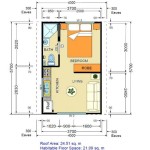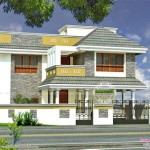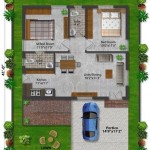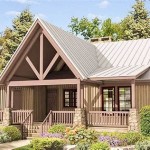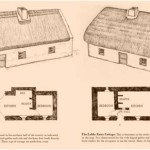Foursquare Floor Plans: Understanding Their Evolution and Enduring Appeal
Foursquare houses, identifiable by their distinctive cubic shape and pyramidal roof, enjoyed immense popularity in the United States from the late 1890s through the 1930s. Their efficient use of space and relatively low construction costs made them an attractive option for burgeoning middle-class families. Understanding the typical foursquare floor plan offers insight into the lifestyle and priorities of the era.
The classic foursquare layout is characterized by a nearly square footprint, typically divided into four equally sized rooms on each floor. This arrangement lends itself to a clear and logical organization of space. The ground floor typically housed the main living areas: a living room, dining room, kitchen, and often a small entry hall or receiving room. Upstairs, the four rooms were generally dedicated to bedrooms, with the possibility of a small bathroom tucked into a corner or above the staircase.
One of the key advantages of the foursquare design was its adaptability. While the basic four-room-per-floor layout remained consistent, architects and homeowners could customize the interior to suit their specific needs. For instance, some foursquares featured an open floor plan between the living and dining rooms, creating a larger, more communal space. Others maintained distinct rooms, offering greater privacy.
The location of the staircase within the foursquare also varied. In some cases, the stairs ascended directly from the front entry hall, while in others, they were positioned more centrally within the house, often between the living and dining rooms. This seemingly small detail could significantly impact the flow and feel of the house.
Kitchens in foursquare homes were initially designed as primarily functional workspaces. They were often located at the back of the house, separated from the more formal living and dining areas. As the 20th century progressed and social norms shifted, kitchens gradually became more integrated with the rest of the house. Later foursquare designs sometimes incorporated breakfast nooks or pass-throughs to the dining room, reflecting a changing understanding of the kitchen's role in family life.
Bathrooms, in early foursquare homes, were often small and utilitarian. They were typically located on the second floor, often tucked above the kitchen or entry hall to simplify plumbing. As indoor plumbing became more common and affordable, bathrooms in later foursquares became larger and more elaborate, sometimes featuring clawfoot tubs and pedestal sinks.
The distinctive pyramidal roof of the foursquare not only contributed to its visual appeal but also created valuable attic space. While initially unfinished, these attics often provided storage or served as play areas for children. As families grew or needs changed, many homeowners finished their attics, converting them into additional bedrooms, playrooms, or home offices.
Variations on the standard foursquare plan emerged over time. The "American Foursquare" often included a front porch spanning the width of the house, providing a welcoming outdoor space for socializing and relaxation. Other variations included dormers, which added both visual interest and usable space to the attic, and built-in features like window seats and bookshelves, reflecting the growing desire for comfort and convenience.
The rise of the automobile also influenced foursquare design. While early foursquares were typically built without garages, later versions often incorporated detached garages or carports, reflecting the increasing prevalence of car ownership. This shift marked a transition in how homes interacted with the surrounding environment, moving away from pedestrian-oriented streetscapes towards car-centric suburban development.
Examining foursquare floor plans provides a glimpse into the lives of the families who inhabited these homes. The efficient use of space, the emphasis on functionality, and the adaptability of the design all reflect the values and priorities of the early 20th century. While architectural styles have continued to evolve, the foursquare remains a testament to a period of significant social and technological change, and its enduring appeal lies in its simple, practical, and adaptable design.
The popularity of the foursquare eventually waned as architectural tastes shifted towards newer styles like the ranch and the Cape Cod. However, the foursquare's influence can still be seen in contemporary home design. Its emphasis on efficient use of space, open floor plans, and flexible living areas continues to resonate with homeowners today, demonstrating the lasting legacy of this iconic American house style.

Chicago Vernacular Architecture

An American Foursquare Story Four Square Homes House Plans Vintage

Modern American Homes Classic Foursquare C L Bowes 1918 Square House Plans Four

Traditional Four Square House Plan 50100ph Architectural Designs Plans

The Foursquare Past Present Everett Custom Homes

American Foursquare Home Style History 101 Living In A Fixer Upper

1925 Lewis Built Catalog Homes The Portland Square House Plans Four

Change Happens American Foursquare

File American Foursquare Sears 52 Gif Wikipedia

1922 Bennett Homes The Erie American Foursquare Residential Architecture

